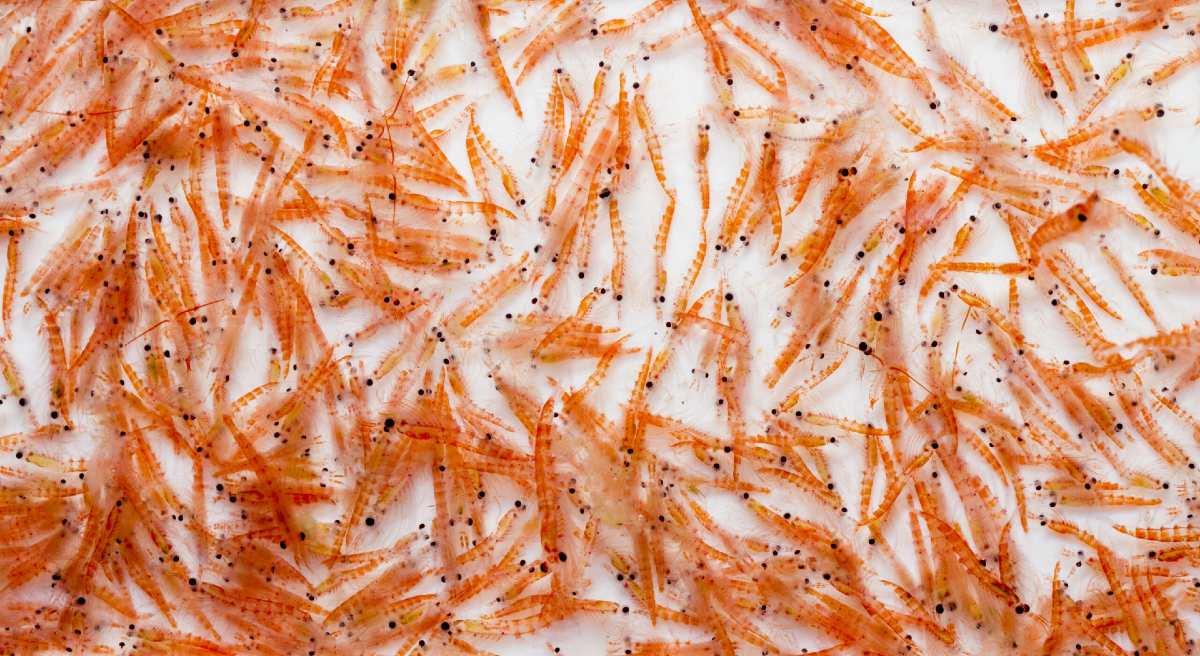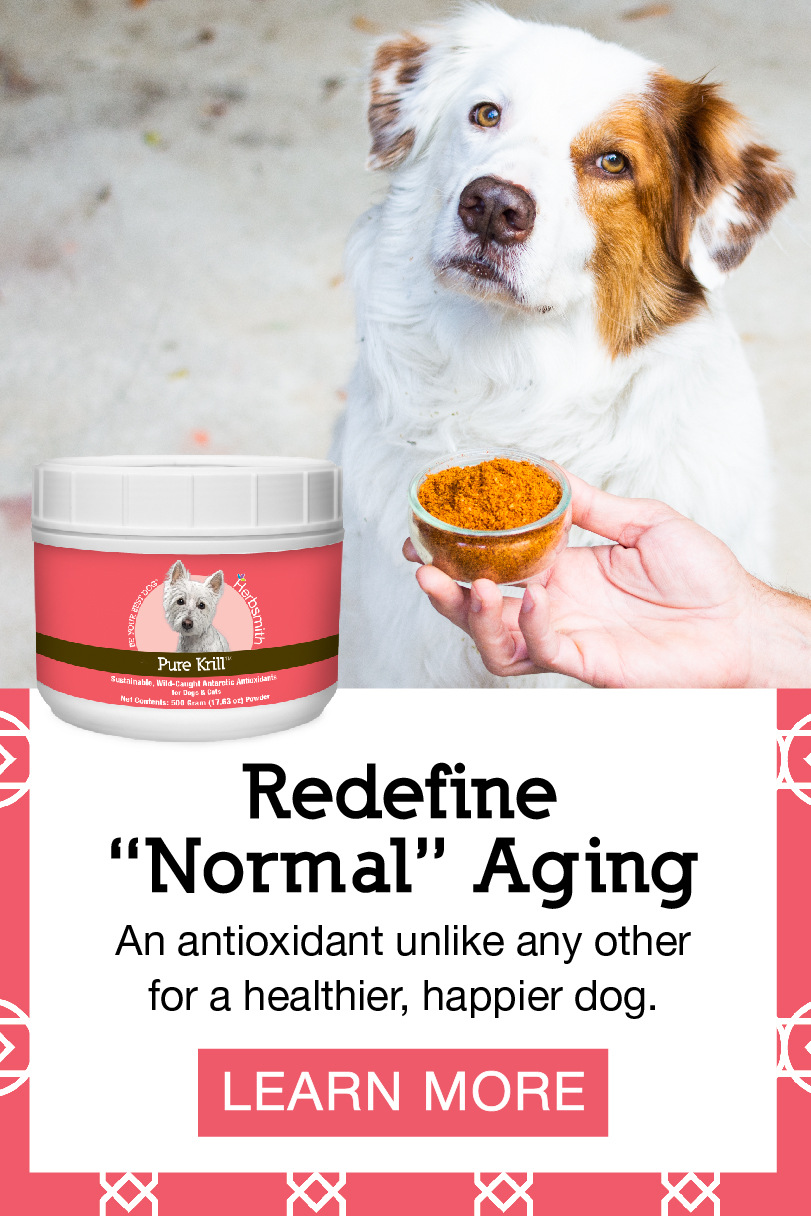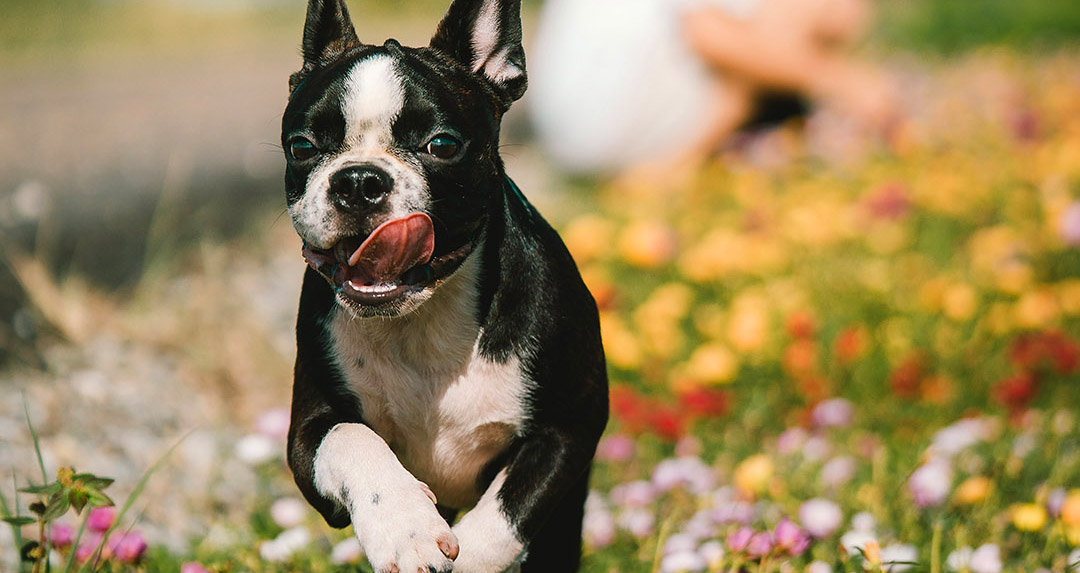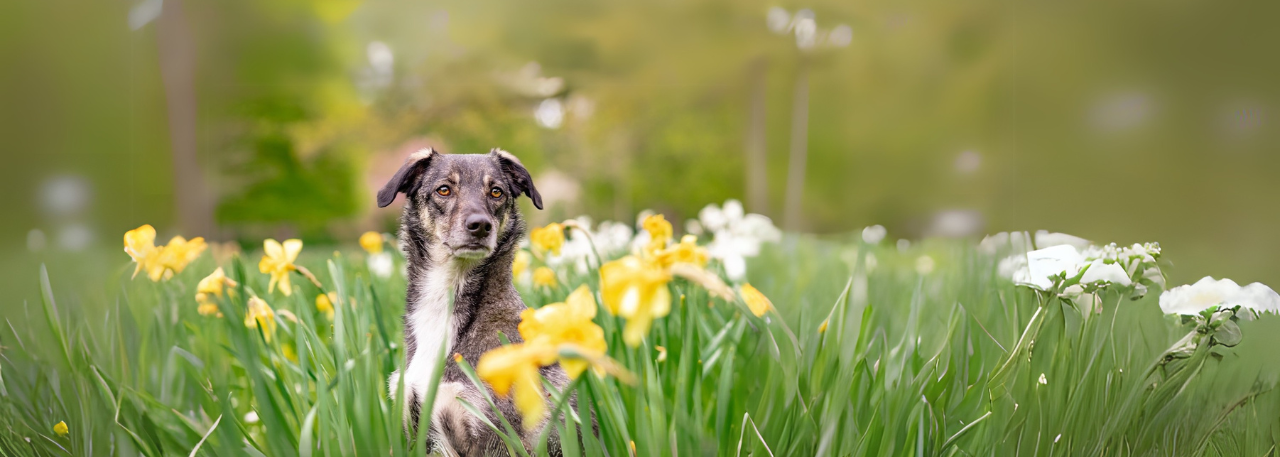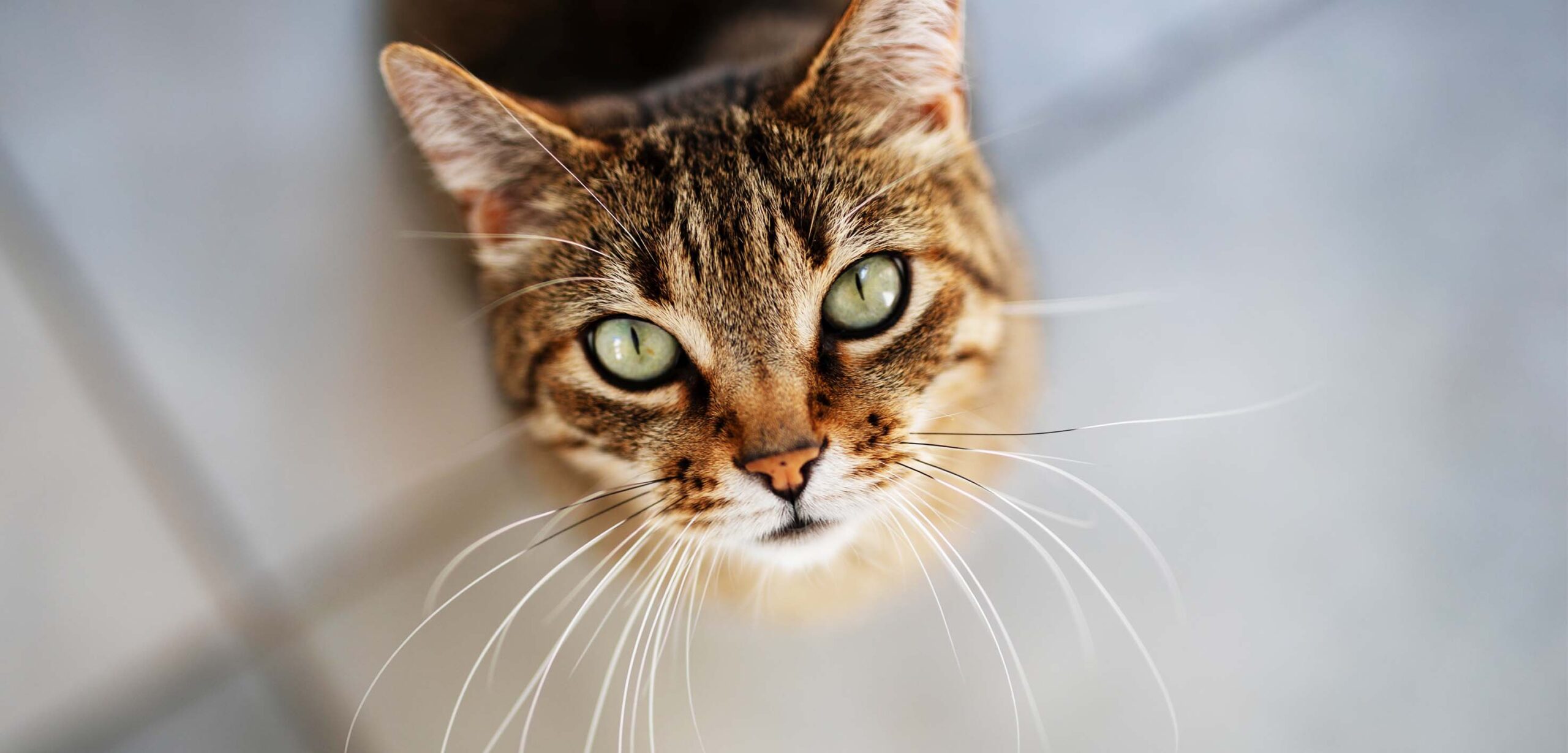When it comes to what you’re putting in your whisker-toter’s bowl, you want to make the best choices. That includes asking the tough questions- how something is sourced, from where, and what sustainability efforts are in place, if any.
As you consider an ingredient like krill, it should be no different. You should make the best, more informed decisions you can for yourself and your pet.
There are a lot of factors to consider, so it’s best to start at the beginning.

On The Agenda
What is Krill?
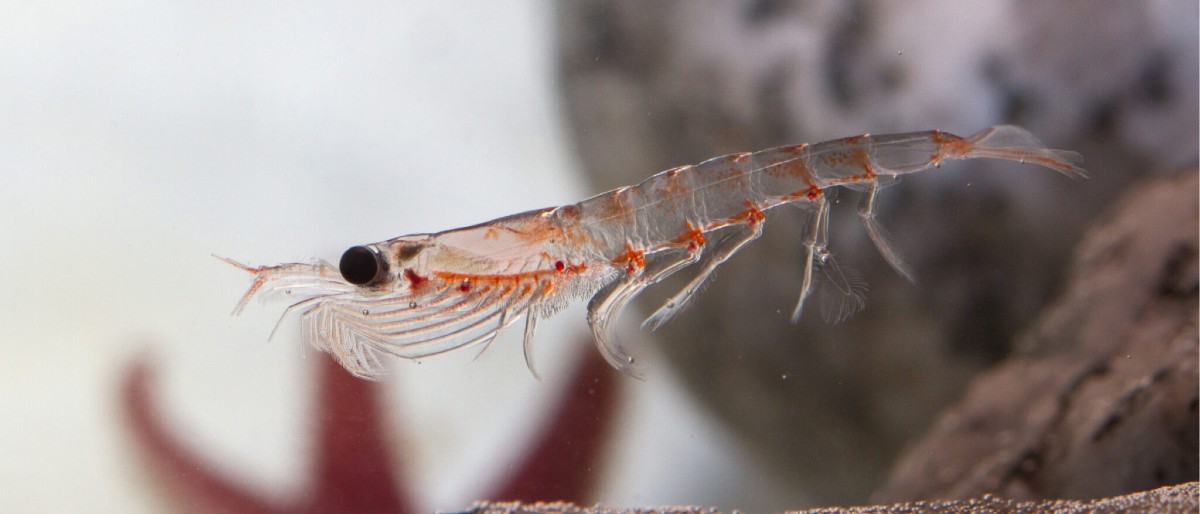
Krill are small opaque crustaceans, the largest of the 85 species being roughly the size of your pinkie finger.
These shrimp-like creatures play a crucial role in the marine ecosystem and food chain as a staple in many species’ diets. They aggregate in dense swarms and spend much of their life hiding in the cold depths of the sea to avoid predators.
Krill only come up at night to feed on phytoplankton (you may have noticed swarms of glowing luminescence in the ocean), and it’s this diet that makes them rich in a potent antioxidant called astaxanthin.
Why Is Krill So Popular & What Are The Benefits Exactly?
Well, that incredible antioxidant just mentioned is quite a big deal. It’s an antioxidant with radical scavenging abilities hundreds of times more powerful than vitamin C, vitamin E, or beta-carotene. Because free-radical damage contributes to the aging process, providing powerful antioxidants can support your pack’s health and vitality.
Besides that, krill is brimming with Omega 3s (EPA & DHA), phospholipids, and choline.
Omega-3 Fatty Acids (EPA & DHA) promote a healthy inflammatory response in everything from the heart to the immune system. They’re also a must since carnivores can’t produce them on their own.
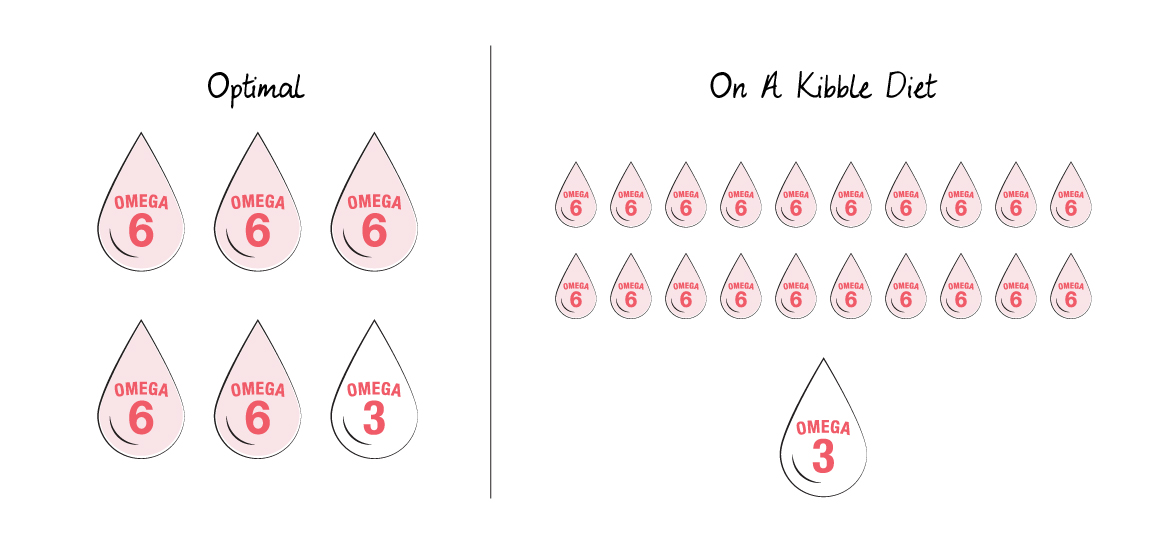
The ideal ratio of omega-6 to omega-3 is 5:1 (or even better, 1:1), but the average kibble-fed dog receives a ratio closer to 20:1 (omega-6:omega-3). High levels of omega 6 (without enough omega 3) can lead to uncontrolled inflammation. Inflammation increases the probability of diseases — ranging from arthritis to diabetes, irritable bowel disease, and even cancer.

Phospholipids are a more efficient delivery method for Omegas than, say, salmon oil because it takes that essential omega-3 to where your four-legger will benefit from them the most.
Choline is an essential nutrient. Several studies show encouraging results for dogs suffering from brain, heart, and liver issues when supplementing choline, so adding it can foster health.
These benefits don’t just apply to our whisker-toting population. Much of the research done on krill is a result of the burgeoning human supplement industry.
In 2019 alone, a leading krill-harvesting company sold 1.58 billion doses of krill oil worldwide.
Where Does It Come From?
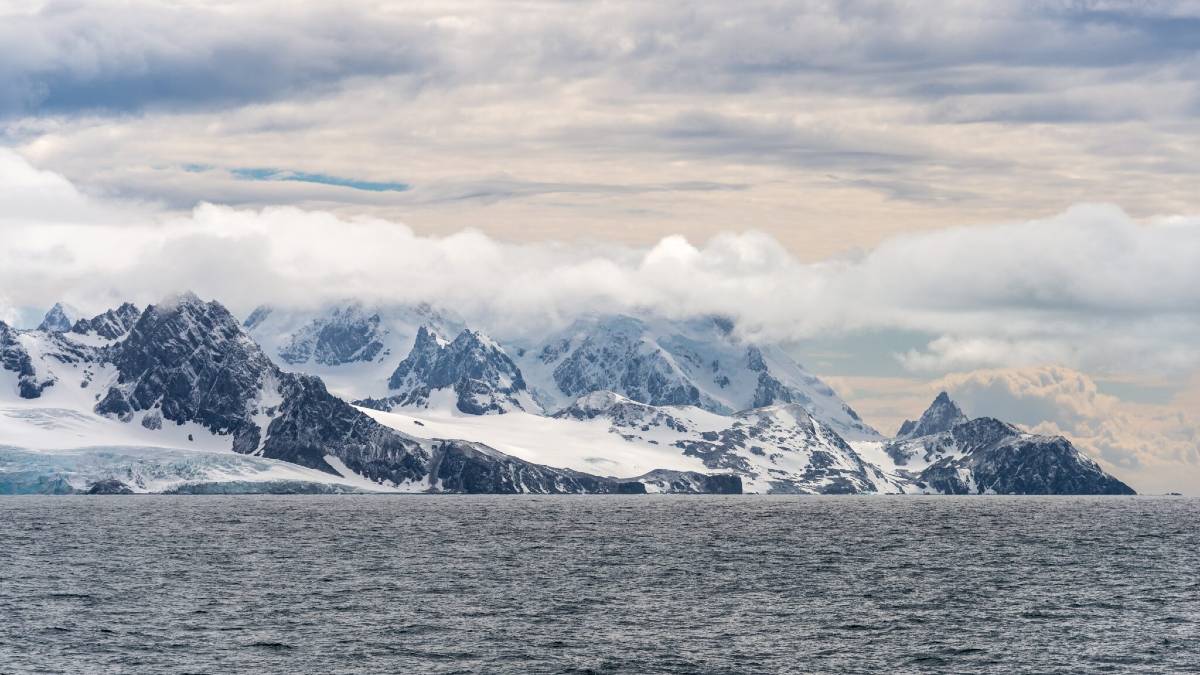
Krill is found in all of the world’s oceans and makes up one of the largest biomasses. Antarctic Krill (Euphausia Superba) is one of the most abundant krill species in the Southern Ocean. Their estimated numbers are anywhere between 125 million tons and 6 billion tons in the waters around Antarctica.
How Is It Produced?
The most well-known form of krill for the human and pet industry alike is krill oil. Krill oil is generally extracted with proprietary technology. Still, reputable suppliers will include low-temperature procedures using ethanol and water to remove unneeded materials like salt while keeping all of the benefits krill offers, including Omega-3, phospholipids, choline, and astaxanthin.
Because krill is such a clean source, to begin with, the process avoids molecular distillation and the addition of chemicals to extract marine oils- procedures that other oil producers rely on.
One largely overlooked byproduct is produced by this process, though, and that’s the krill bodies that remain once the oil is extracted.
Why Is There So Much Talk About Sustainable Sourcing?
The health of the Southern Ocean ecosystems depends heavily on healthy krill populations. While still exceptionally abundant, according to the U.S. National Oceanic and Atmospheric Administration, Antarctic krill populations have dropped an estimated 80 percent since the 1970s. Scientists have not determined the exact reason, but the loss of sea ice is thought to be a major factor.

Scientists are also concerned about what the combination of fishing and climate change (including ocean acidification) means for Antarctic krill and, in turn, for the entire Antarctic marine ecosystem.
The increase in fishing is largely due to the increase in demand for krill oil.
Why Offer Krill Then?
There are the undeniable benefits of krill for dogs and cats, of course.

- Krill happens to be the smallest on the food chain, making them an incredibly clean source of Omega 3s, a better option than fish oils.
- Krill offers active, ready-to-use forms of Omega-3 EPA & DHA that carnivores can actually use, unlike plant-based Omega-3 sources like hemp seed oil. These oils only contain ALA, an inactive form of Omega-3 that carnivores struggle to convert– only 5-15% is successfully converted in dogs, for instance.
- Plus, it is rich in an incredibly potent antioxidant.
But krill oil production does create this HUGE waste and wasted opportunity. In producing krill oil, the rest of the krill is discarded after concentrating the oil.
That’s in large part because human supplement markets would never sell ground krill as is because of the inconveniences it poses. The format of ground krill would mean additional efforts to make it into something more convenient to take. Not only that, but the sheer amount that you would have to take each day would make it unmanageable.
That’s why one supplier decided that there had to be a better alternative and why offering whole, ground krill to dogs and cats made such sense.
Upcycling Whole, Ground Antarctic Krill
Instead of continuing to harvest krill, using the oil, and discarding, we can complement the human oil industry’s production by taking the bodies that were already processed and using them to benefit our animals.
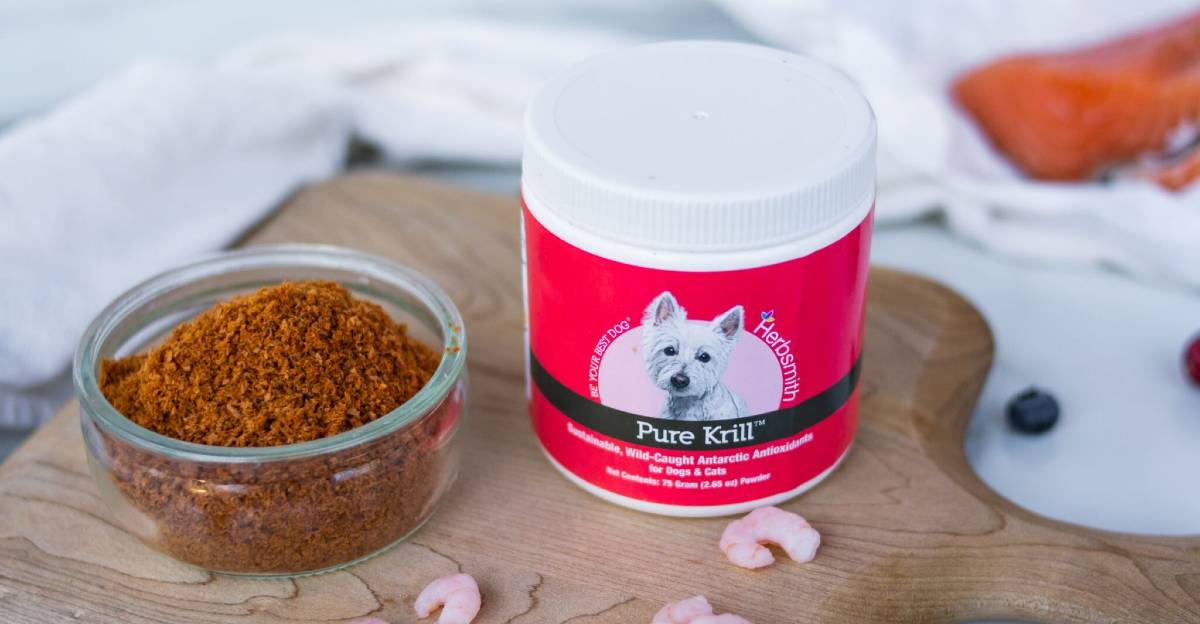
Using whole ground krill rather than a concentrated krill oil, we utilize every part of the krill, so nothing goes to waste.
It offers a solution to an industry-wide issue, and doing so not only minimizes waste and our environmental impact but gives our animals every extraordinary benefit krill offers.
Partnering with a Responsible Fishery that Prioritizes Sustainability
It’s not just about the importance of choosing an eco-conscious form of krill but also sourcing when choosing krill.
We choose to work with one of the most sustainable fisheries in the world, certified by the Marine Stewardship Council (MSC), a certification that ensures that fisheries are operating responsibly with minimal environmental impact.
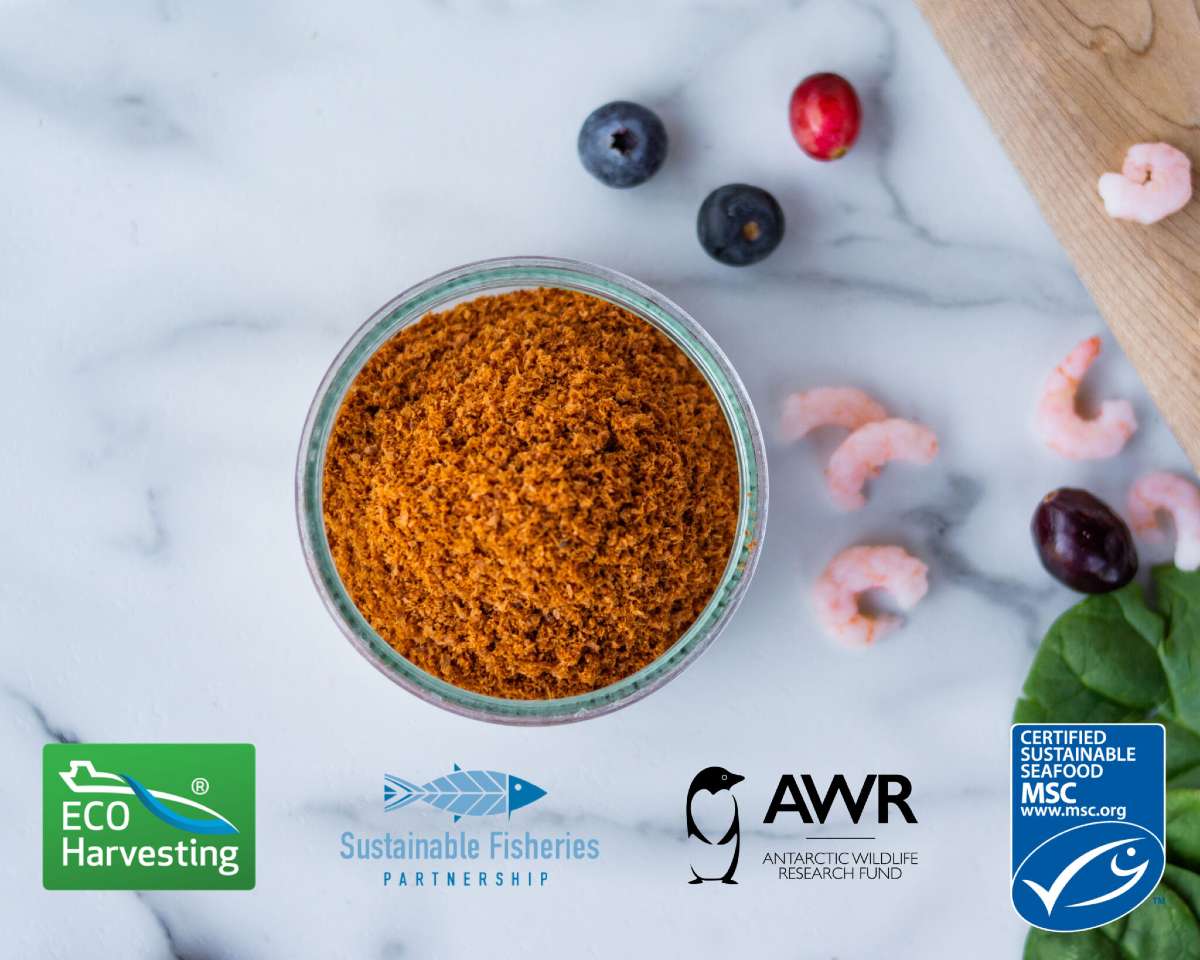
The whole ground krill used in Pure Krill is harvested in Area 48– a small area and the only location in the Southern Ocean where fisheries have a license to fish krill.
Antarctic Krill Fisheries Have One of the Most PreCautionary Catch Limits
Organizations like CCAMLR – the Commission for Antarctic Marine Living Resources Conservation provide oversight and set strict limits for the percentage of krill that can be harvested in area 48 or Antarctica by the Antarctic Krill Fishery.
In fact, less than 1% of the total biomass of krill is harvested from Area 48 by all fisheries combined.
This area is seen by independent NGOs like the Sustainable Fisheries Partnership, as one of the most sustainable in the world, with responsible and environmental operations at its core.
See this report from the Sustainable Fisheries Partnership on the CCAMLR’s impact.
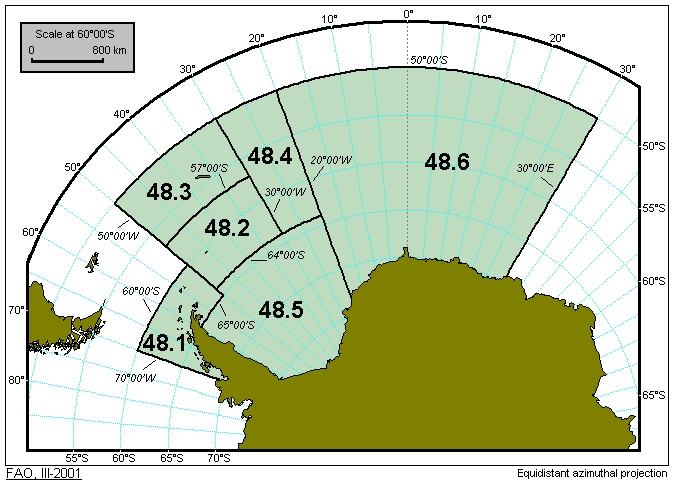
Eco-harvesting
Our supplier also uses an innovative technology called Eco-harvesting, which brings the krill on board through a conveyor hose rather than trawling or lifting the net.
This prevents unnecessary by-catch of birds and sea life. It creates such little by-catch that the total percentage of fish or other small marine life could fit into a small bucket per YEAR.
Continued Conservation Efforts
The fishery also works closely with WWF-Norway and the Antarctic and Southern Ocean Coalition. Together they established the Antarctic Wildlife Research Fund (AWR). The fund’s purpose is to facilitate and promote Antarctic marine ecosystem research.
In 2018, the fishery also partnered with the Association of Responsible Krill Harvesting Companies (ARK) as it adopted its Voluntary Penguin Buffer Zones to protect penguins during their breeding season. In 2020, this was expanded to include a permanently closed area on the Antarctic Peninsula tip.
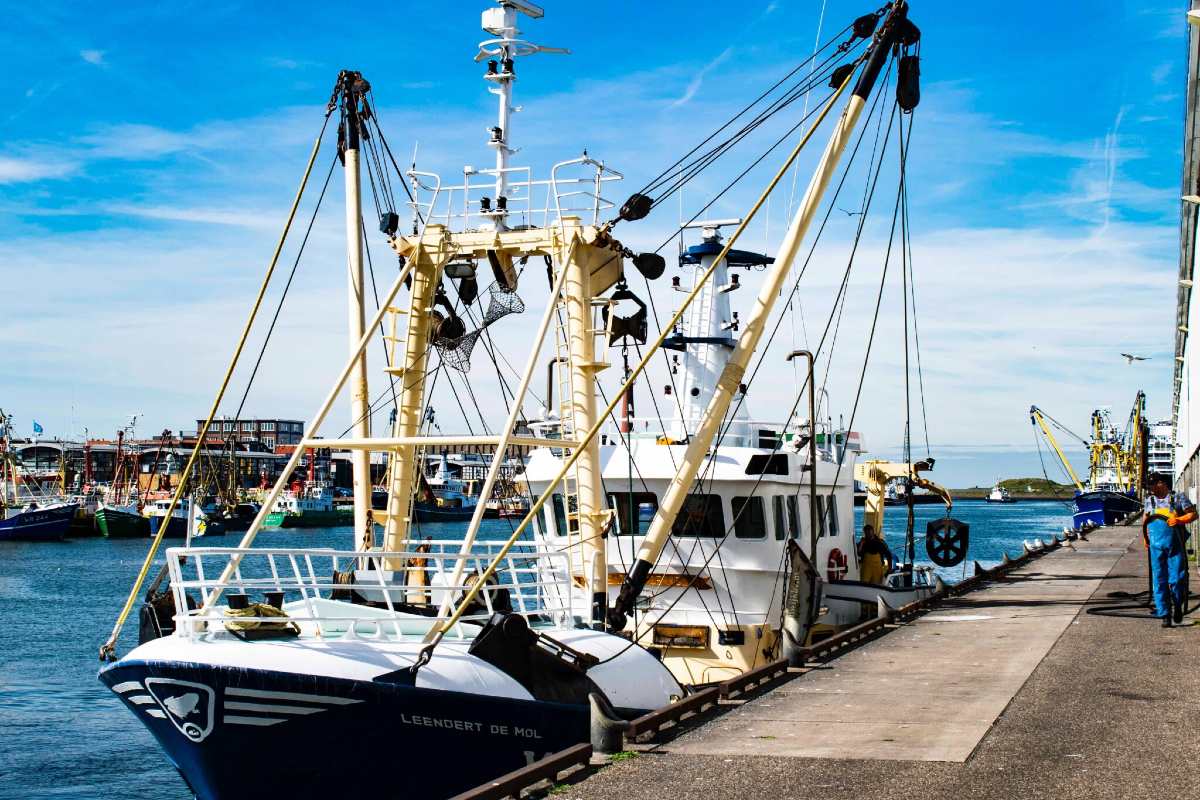
Their efforts also include implementing voluntary measures to guarantee that the fishery operations have a low impact on the Antarctic ecosystem. By inviting scientists on board at no cost, they contribute to the science and research needed to understand the complex marine ecosystem in the Antarctic.
Choosing the Most Eco-Conscious Form of Krill
Adding krill to the bowl offers a clean source of some of the most unbelievable benefits for your pet- Omega-3s, phospholipids, choline, and astaxanthin.
These benefits make this bowl-boosting addition a no-brainer, but it’s also about making the best choice around sourcing and sustainability.
Weighing each of those factors, by far the most responsible and eco-conscious choice is ground krill.
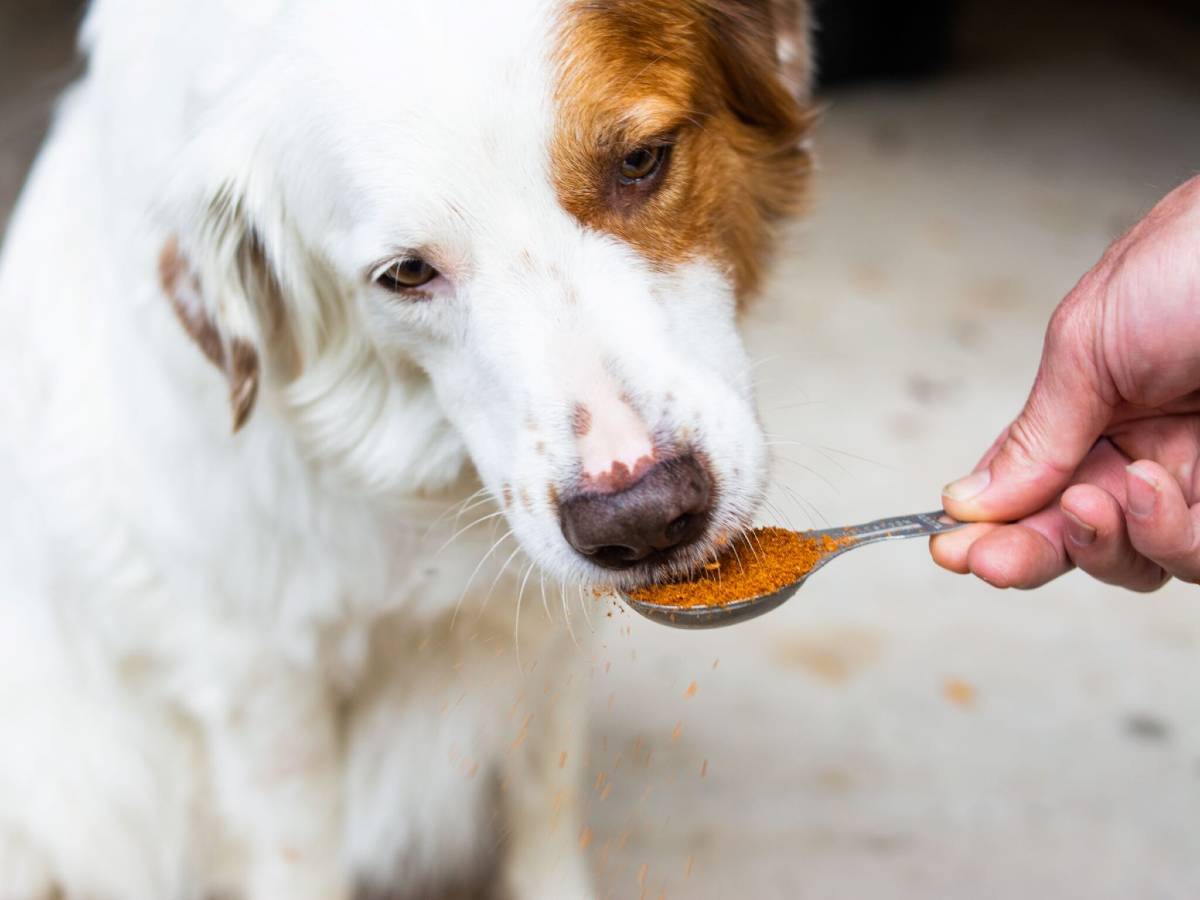
Share this Post

Dr. Chris Besent
Chris Bessent, DVM, MSOM, Dipl. OM, L.Ac. has over thirty years of experience in veterinary medicine including certificates in veterinary acupuncture, veterinary chiropractic and veterinary Chinese herbology. Imbued with Eastern philosophy and the knowledge that food is the foundation of health, Dr. Bessent also received her degree in veterinary nutrition and began to formulate recipes fit for a carnivore from nothing but whole foods. Currently, she divides her time between the Simple Food Project and Herbsmith, both of which are owned and operated out of her facilities in southeastern Wisconsin.

Kayla Behling
Kayla is the Content Writer for Herbsmith. She has a cat named Professor Cat-Faced Meowmers, who goes by Kitty, and a goof of a dog, named Duck. She stays busy biking trails, playing board games, and searching for the next best craft beer.
